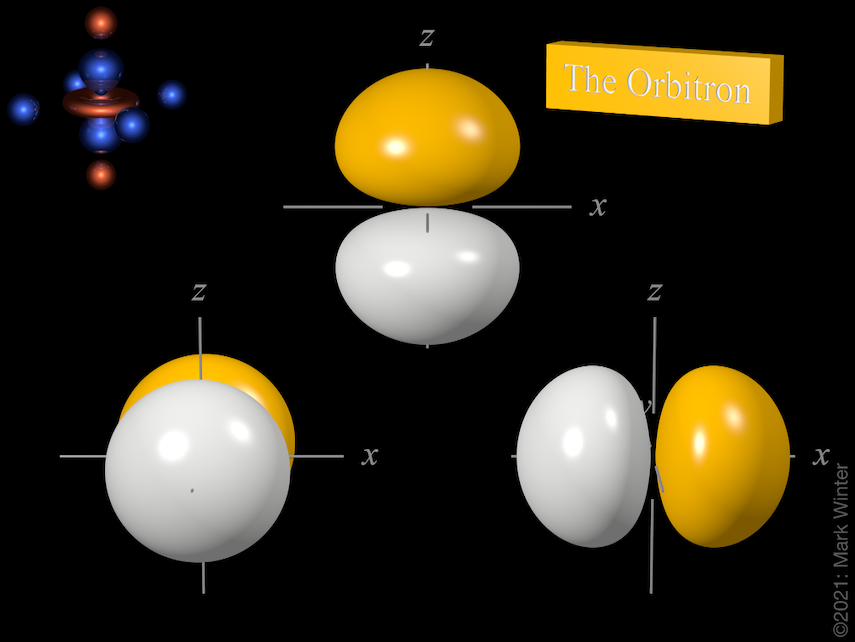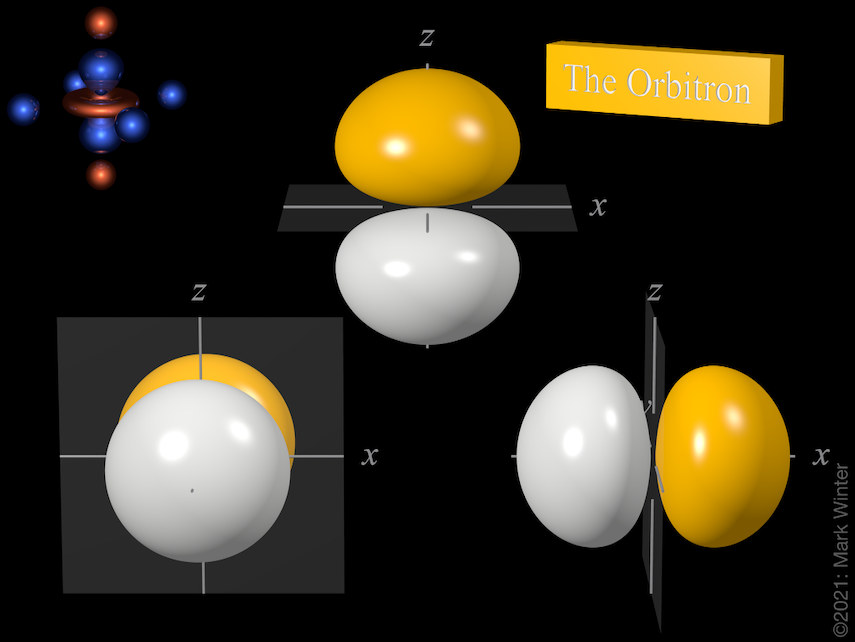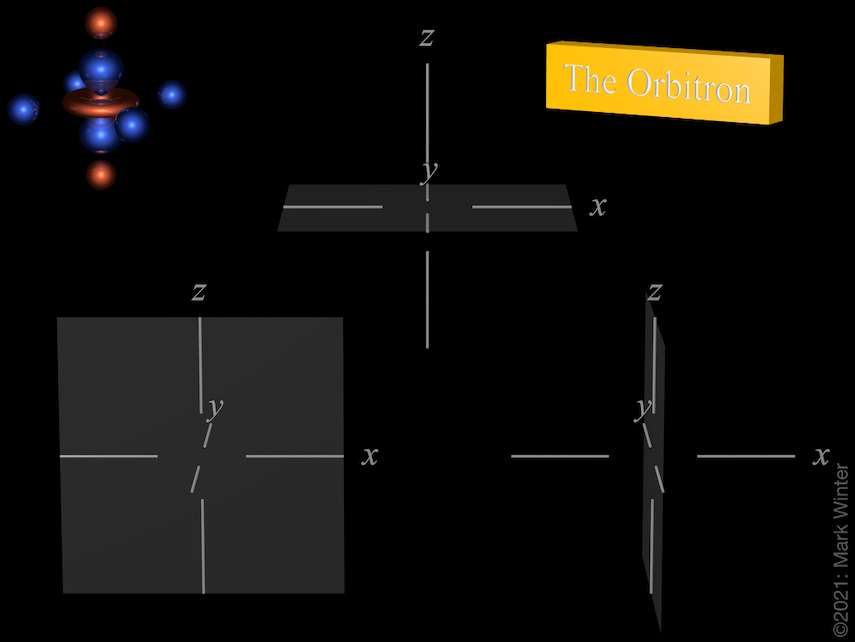2p orbitals
The shape of the three 2p orbitals. From left to right: 2py, 2pz, and 2px. For each, the yellow zones are where the wave functions have positive values and the white zones denote negative values.
For any atom, there are three 2p orbitals. These orbitals have the same shape but are aligned differently in space. The three 2p orbitals normally used are labelled 2px, 2py, and 2pz since the functions are "aligned" along the x, y, and z axes respectively.
Note that it is common to denote the shapes of 2p orbitals in books and papers as shown below. These "figure-of-eight" style pictures are used only for graphic convenience. These pictures make the orbitals appear much "thinner" than they are really, and also that there are sharp "points" in the region of the nucleus, which there are not.

Each 2p orbital has two lobes. There is a planar node normal to the axis of the orbital (so the 2px orbital has a yz nodal plane, for instance). The higher p-orbitals ( 3p, 4p, 5p, 6p, and 7p) are more complex still since they have spherical nodes as well.
The origin of the planar node becomes clear when inspecting the wave equations which, for instance, includes an x term in the case of the 2px orbital. When x = 0, then there is a node, and this by definition is the yz plane.
The OrbitronTM, a gallery of orbitals on the WWW: https://winter.group.shef.ac.uk/orbitron/
Copyright 2002-2023 Prof Mark J. Winter [Department of Chemistry, The University of Sheffield]. All rights reserved.


